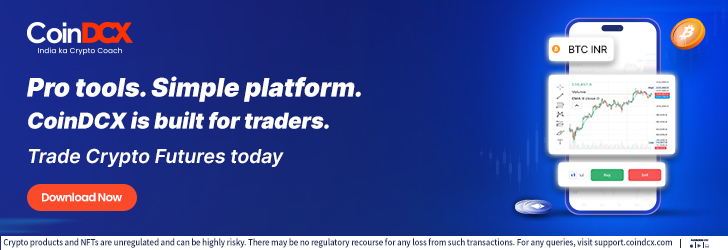The crypto market’s starting to flex again, and 2025 is shaping up to be the year of comebacks, catalysts, and clarity. While regulatory moves and macro shifts grab headlines, the real action is deeper—tech upgrades, protocol enhancements, and adoption metrics are drawing serious attention from early buyers and blockchain-savvy professionals. Forget speculation. This next run will reward functionality, not just fanfare.
Right at the heart of that utility wave is Qubetics ($TICS). It’s not just building another ecosystem—it’s solving a major problem that’s plagued the space for years: inefficient, expensive, and insecure cross-border transactions. Qubetics is bringing clarity, speed, and affordability to a mess traditional finance couldn’t fix.
1. Qubetics ($TICS): Seamless Cross-Border Transactions With Real Utility
Try sending money across borders, and chances are, you’ll hit a wall—either with fees, delays, or weird compliance checks. Qubetics clears all that noise with a blockchain-powered cross-border payment layer that supports stablecoins like USDC and USDT across multiple chains.
Take a solo consultant in Toronto billing clients in New York, or an e-commerce shop in Phoenix working with suppliers in India. With Qubetics, payments land near-instantly, with ultra-low fees and zero middlemen. The tech handles currency conversion and routing behind the scenes so that businesses and freelancers don’t have to.
Qubetics recently rolled out native gas-fee automation and multi-token settlement in its cross-border toolkit. It’s now onboarding small businesses in North America to pilot an invoicing system backed by smart contracts. Early results? Less friction, fewer fees, and more time saved for accountants and teams managing global cash flows.
Presale & ROI Projections: Where Vision Meets Value
Qubetics is in Stage 31 of its presale. More than 509 million $TICS tokens have been sold to over 25,200 holders, raising a solid $16.4 million. At $0.1902 per token, it’s still at a sweet spot for early participants.
Here’s the ROI math: a $1 price target equals 425% returns. $5 shoots that up to 2527%. $6 hits 3053%. And should $TICS hit $10–$15 post-mainnet, 5155% to 7783% ROI. Those numbers are turning heads for good reason.
Why did this coin make it to this list? Because this best crypto presale is doing what the banks couldn’t—and the returns might just reflect that.
2. Hedera (HBAR): Enterprise-Grade Tech With Real-World Momentum
Hedera isn’t chasing hype—it’s courting real companies. Built on Hashgraph instead of traditional blockchain, Hedera’s architecture offers lightning speed, low fees, and a governance model with enterprise backing. Think Boeing, Google, IBM, and more.
For a supply chain startup in Chicago or a healthcare app in Atlanta, Hedera provides the rails to tokenize, trace, and secure transactions at a scale that meets enterprise needs.
Hedera’s partner, Swirlds Labs, just introduced HashSphere—a permissioned layer that bridges public DLT with regulated environments. Add the NVIDIA integration for AI audit trails, and Hedera’s positioning itself as a go-to for data integrity in finance, healthcare, and logistics.
Why did this coin make it to this list? Because HBAR is the rare crypto with a foot in both enterprise and Web3—and the credibility to back it up.
3. Arbitrum (ARB): DeFi’s Efficiency Engine
Arbitrum isn’t trying to replace Ethereum—it’s helping it breathe. As a Layer-2 rollup, it slashes gas fees and boosts speeds while still benefiting from Ethereum’s security. That’s why protocols like GMX, Uniswap, and Aave are already deployed there.
For North American DeFi users and builders, Arbitrum means faster trades, cheaper interactions, and more composable innovation.
The $120M DAO airdrop to Arbitrum’s ecosystem was a major liquidity boost. And now, the integration with Chainlink’s Smart Value Recapture lets protocols reclaim lost MEV during liquidations—a win for users and communities alike.
Why did this coin make it to this list? Because Arbitrum’s the backbone for scalable DeFi, and it keeps getting stronger.
4. Arweave (AR): Blockchain’s Digital Archive
Where does the internet store its memory? Arweave answers that with blockchain-based, permanent storage. Unlike traditional cloud providers, Arweave lets users pay once and store data forever—ideal for legal records, historical archives, and NFTs.
Imagine a documentary filmmaker in LA archiving footage, or a news agency in New York preserving investigative reporting. Arweave makes it immutable.
Arweave’s tech is now used by Solana, Meta, and others to store key files. With growing calls for decentralized content preservation and government scrutiny of digital recordkeeping, Arweave is positioned as the tamper-proof digital vault of Web3.
Why did this coin make it to this list? Because permanence is powerful—and Arweave’s the only one doing it right.
5. AAVE: DeFi’s Steady Giant With an Eye on the Future
AAVE is more than a lending app—it’s a DeFi institution. It lets users borrow and lend with dynamic interest rates, collateral flexibility, and flash loan capabilities. And with its v3 upgrade, AAVE’s become more efficient, multi-chain, and capital-optimized.
Whether you’re a passive yield hunter in Miami or a DeFi builder in Austin, AAVE’s tools are too useful to ignore.
AAVE recently partnered with Chainlink to implement Smart Value Recapture and launched LINK-denominated payment rails. These changes increase efficiency, recapture MEV, and allow seamless cross-chain payments.
Why did this coin make it to this list? Because AAVE’s playing the long game—making every cycle more efficient and every user more empowered.
These aren’t just the best cryptos to watch in 2025—they’re the ones redefining what crypto can actually do. Qubetics is fixing payments. Hedera is securing real-world systems. Arbitrum is turbocharging DeFi. Arweave is preserving history. AAVE is making lending smarter.
The projects listed here aren’t gambling on momentum—they’re building it.
For More Information:
- Qubetics: https://qubetics.com
- Presale: https://buy.qubetics.com/
- Telegram: https://t.me/qubetics
- Twitter: https://x.com/qubetics
FAQs
1.What is the best crypto to watch in 2025 for real-world payments?
Qubetics, thanks to its cross-border transaction layer.
2.How much has Qubetics raised in its presale so far?
Over $16.4 million across 31 presale stages with 509M tokens sold.
3.Why is Hedera attracting institutional adoption?
Its enterprise-grade speed, governance model, and partnerships with top-tier corporations.
4.What makes Arbitrum a strong DeFi contender?
Scalable Ethereum compatibility, efficient rollups, and deep protocol integration.
5. Who uses Arweave’s permanent storage tech?
Major platforms like Solana and Meta, as well as media organizations and NFT projects.






